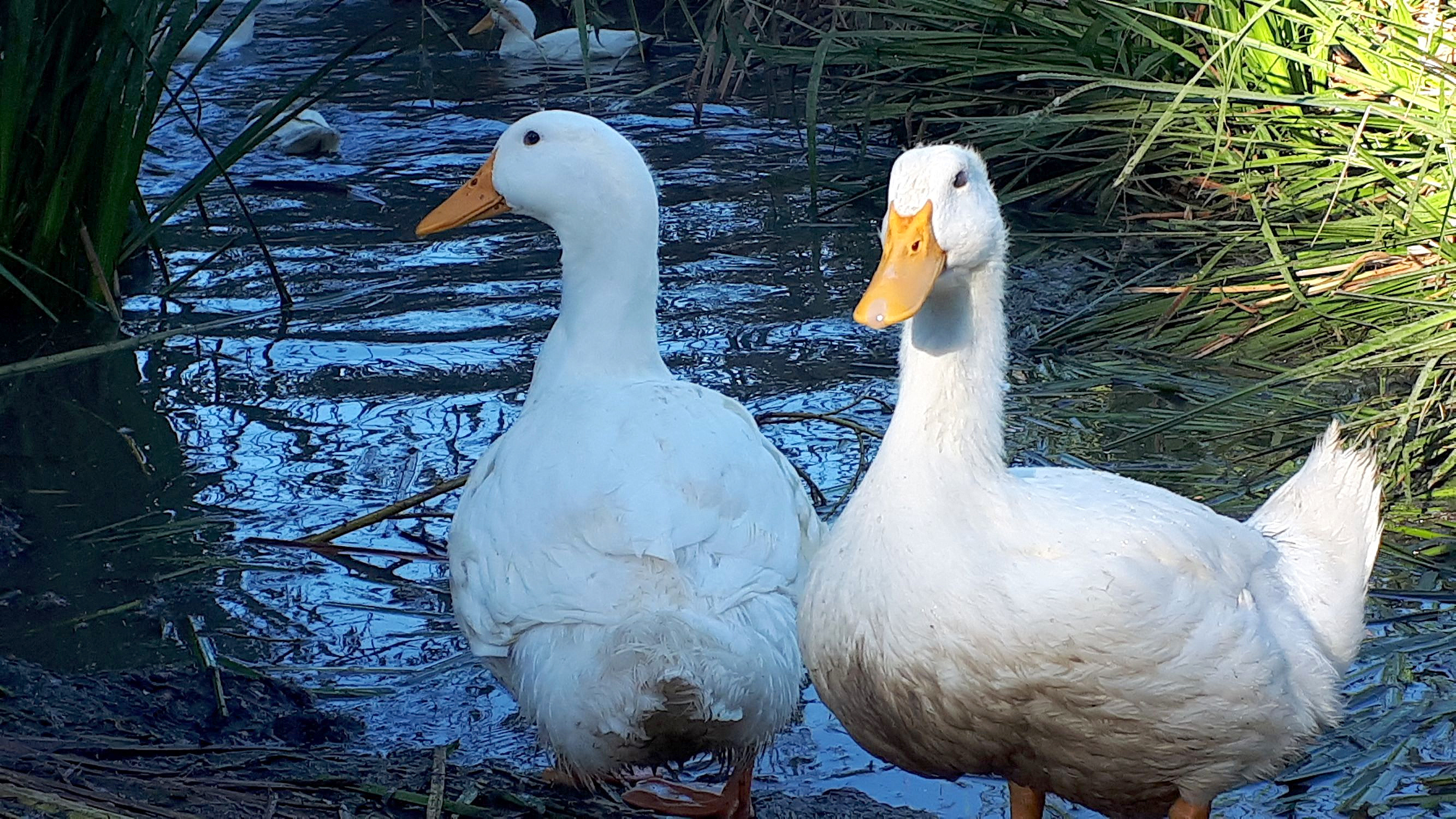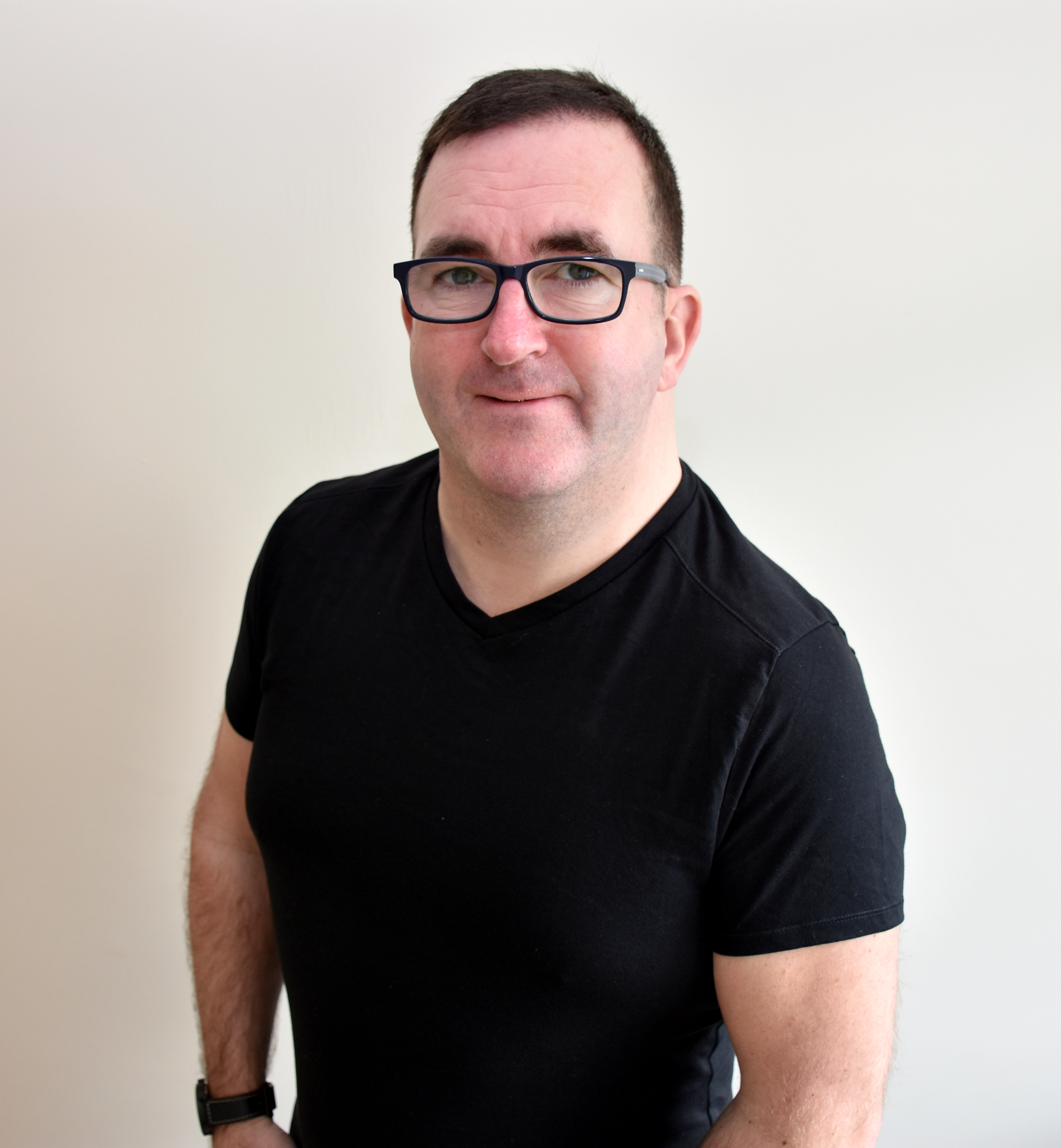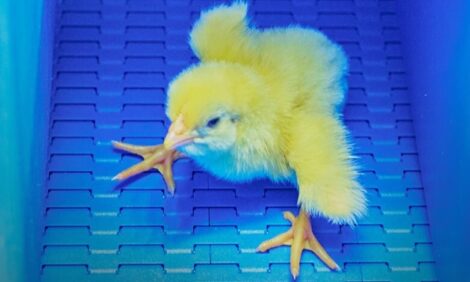



Raising free-range ducks in South Africa
For one small-scale poultry farmer, rearing chickens and ducks in South Africa’s KwaZulu Natal Midlands is a labour of love that’s paying dividends.Part of Series:
Next Article in Series >
Running an open-air duck and chicken farm in picturesque surroundings in South Africa sounds idyllic, but there are challenges in the system which are unique to the country.

For the past 10 years Vanessa Collocott has owned and run The Blue Orange Farm located in the rolling hills of the KwaZulu Natal Midlands near the town of Balgowan.
Her farm extends to 20 hectares consisting of veld grass and kikuyu pastures with two small dams which the ducks have access to.
Along with one other employee, Vanessa runs 1,200 Pekin ducks and 1,000 Cobb broiler chickens at different stages of development. She also has a small flock of 25 Boer goats crossed with Saanen milking goats and three Large White sows, a Large White boar and 20 piglets at foot.
Vanessa feeds a commercial ration to the birds but is very concerned about rising feed costs.
She says: “The ducks are first fed De Heus starter crush for 14 days from birth, then commercial broiler finisher up to slaughter.
“The chickens get Epol starter crush for 21 days (800g per bird), then onto a finisher pellet until day 40, followed by a post-finisher feed up to slaughter.

In a phase of exponential growth, but costs remain high
“Our ducks eat between a total of 10kg and 11kg of feed per bird before slaughter. The week leading up to slaughter, the duck consumes around 350g per day per bird.
“As for the chickens, they eat a total of 6kg of feed per bird before slaughter, consuming around 120g per day per bird leading up to slaughter,” says Vanessa.
Vanessa’s ducks are slaughtered at 49 days, but any ducks not large enough are held back for another week. The average dressed weight of a duck is 2.3kg.
The chickens begin to be slaughtered at 48 days up to 63 days depending on the requirements of Vanessa’s customers, as some prefer larger birds. The average weight depending on days to slaughter can be from 1.4kg to 2.5kg.
However, the fluctuating feed costs and hot temperatures provide their own set of challenges for Vanessa’s business.
“The cost of feed is largely dependent on the ruling price of maize in the country at any one time,” says Vanessa. “Currently we are experiencing a green drought and the maize yields do not look promising unless there is sufficient rain between now and the end of April.
“The yield will determine the price of the feed, and unfortunately as a small farmer, I am susceptible to these fluctuations.”
All the birds from Vanessa’s farm are killed in the local Kia Ora Abattoir and delivered oven ready to customers across the country by Vanessa.
“Our customer base is far and wide,” she says. “Not only do I supply locally, but also to Cape Town and Johannesburg.

“The business is in an exponential growth phase, so it is difficult to give a definitive number of how many we sell. However, on a good month the number of ducks sold is approximately 500 to 600 birds, and chickens also around 600. January and February are relatively quiet months following the Christmas rush,” she says.
Significant savings could be made if Vanessa opened up a slaughter facility on her farm and that’s something she has looked into.
“I am in the process of setting up facilities on the farm,” she adds. “I got government approval for a rural abattoir which allows me to slaughter up to 50 birds a day.
“In order for this to be possible I have completed a certified meat examiner's course and once I am up and running I will be inspected on a monthly basis by a health inspector to ensure that I am complying with regulations.”
The ducks are currently sold at R58 (£3.11, €3.64) per kilogram dressed weight and the chickens a little less at R45 (£2.41, €2.83) per kilogram dressed weight. “The cost of rearing fluctuates depending on mortalities as a result of predators in the area including mongooses, black backed jackal and otters. Measures are in place including electrified movable fencing to limit major losses.
“Unfortunately, operating an outdoor facility means avian influenza is a significant risk. However, we have territorial wild resident water fowl that tend to chase off any unwanted visitors.
“This is unfortunately the price we have to pay to ensure that our birds are raised in the most natural environment possible.
“The challenges on our farm include the fluctuating price of feed and fuel. Weather temperatures during the winter months drop down to below 0°C which makes management of the birds in their natural environment very intensive.
“This is offset by including heaters to ensure adequate warmth. However, this increases the cost of production during the winter months. The heating is switched off when the birds reach two weeks of age. This ensures that the birds rise with the sun and roost when the sun sets.
“There is no artificial lighting in the respective coops, which ensures that the birds do not over-consume as is done with commercial farming practices. The fact that the birds roam also leads to great bone density.
“There are advantages to rearing outdoors which means we produce a genuine free-range product that has been raised ethically, and that can command a higher price than commercially raised birds. I firmly believe that the birds being raised as naturally as possible plays a huge role in the flavour of the meat.
“Our birds are stronger and the meat just tastes better,” says Vanessa. “Some of our more mature customers often comment that this is how chicken tasted when we were young.”













